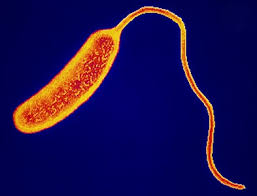Claire Harvey writes in The Sunday Telegraph that just before Christmas, a Victorian three-year-old died and four more children were in hospital with life-threatening illnesses after drinking unpasteurized ‘raw’ milk, commonly sold in health food stores.
 The Victorian government responded quickly, passing a regulation that meant all milk manufactured in Victoria must be either pasteurized, or be rendered undrinkable with a bitter-tasting agent.
The Victorian government responded quickly, passing a regulation that meant all milk manufactured in Victoria must be either pasteurized, or be rendered undrinkable with a bitter-tasting agent.
NSW Premier Mike Baird says only national action will work and the Government can’t stop health food stores selling this stuff. I think that’s nonsense — Jim Beam isn’t manufactured here, either, but the Government certainly regulates that.
I’d be happy to escort Mr Baird or any of his Cabinet to the myriad ‘health’ stores where raw milk, imported from other states, is being sold with misleading labels declaring it to be ‘cosmetic’ or ‘bath milk.’ Worse, it’s displayed in dairy cabinets, right next to the regular milk and cheese.
Here’s why I think the Government must immediately order all milk to be pasteurized.
Nobody’s bathing in it. Hello. Does our Government really believe people when they say raw milk is for bathing? It’s almost sweetly naive that anyone would actually believe that claim — let alone the health authorities. If it’s for bathing, why does it need to be kept in the fridge? And please don’t say ‘to stop it from going off’. The ‘cosmetic’ raw milk label is a deliberate wink-wink way to get around the law — dreamt up precisely so parents who think they know better than biologists can give this stuff to their children. Anyway, you’d have a very shallow bath on a two-litre bottle — unless you diluted it into homeopathic raw milk. Yeah, right.
Milk is for kids. Toddlers are by far the greatest drinkers of milk across the entire population: more than 83 per cent of children aged between two and three drink milk every day. In fact, dairy products are overwhelmingly toddlers’ most commonly consumed foods: an average of 96 per cent have some dairy product every single day, according to the Australian Bureau of Statistics’ National Nutrition and Physical Activity Survey. So what’s the possibility that tiny children will end up consuming the raw milk in health-food shops? I’d say it’s almost guaranteed.
Little tummies are fragile. Under the age of three, the immune system is far too delicate to cope with the bugs that adult guts can process. Bacteria like listeria or E. coli might give an adult a few days of unpleasant toilet time, but they are potentially deadly for children and can cause lifelong neurological disorders. That’s what happened to at least one of the children hospitalised in Victoria. Doctors say one of the greatest risks associated with food poisoning is severe dehydration _ and dehydration is a killer of infants and small children.
Kids don’t read labels. They just charge up to the fridge and grab the nearest bottle. Even the ones who are old enough to read are highly unlikely to say: “Hang on mum, this one says ‘cosmetic purposes only’,” as it sploshes over the biodynamic spelt flakes.
Endangering children is nobody’s right. Libertarians say if people want to drink unpasteurised milk, they should be allowed to do so — just like if you want to go without a seatbelt or a bike-helmet, you should be a allowed to risk your life. My view is we need to find the balance between individual liberty and protection from the idiocy of others. Everyone has a God-given right to make bad decisions for themselves, so long as it doesn’t endanger anyone else (and particularly any children). If that makes us a nanny state, I’m all for it.
 This mechanism, known as “horizontal gene transfer”, allows the cholera bacterium to become more virulent by absorbing the traits of its prey, the researchers said.
This mechanism, known as “horizontal gene transfer”, allows the cholera bacterium to become more virulent by absorbing the traits of its prey, the researchers said.







